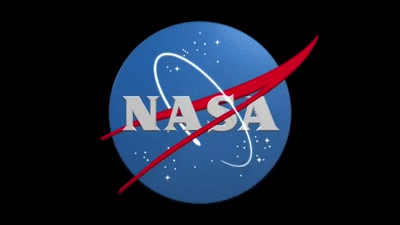Lanas-own-blog - My Personal Space.

More Posts from Lanas-own-blog and Others
The NASA “Worm” Logo
Just like many organizations, the style and logos can change over time. You are probably most familiar with our “meatball” logo. No, unfortunately this does not refer to the delicious food. This logo (below) is our most popular symbol, and dates back to 1959.

But, we’ve also had other insignia that represented our organization throughout the years.
The “worm” logo (below) was used by the agency from 1975 until 1992. The organization wanted to create a more “modern” logo, which resulted in the unique type style of the “worm” logo.

Even though this logo was retired in 1992, the Graphics Standards Manual is still available online HERE.
You can also read up about the emblems, logos and insignia used by NASA throughout the years in a new e-Book available for free HERE.
Make sure to follow us on Tumblr for your regular dose of space:http://nasa.tumblr.com


Pickering’s Triangle






Buzz Aldrins self-portrait during Gemini 12 with the Earth reflecting off his visor, 12 November 1966
js

NASA Astronomy Picture of the Day 2015 September 17
Pickering’s Triangle in the Veil
Chaotic in appearance, these filaments of shocked, glowing gas break across planet Earth’s sky toward the constellation of Cygnus, as part of the Veil Nebula. The Veil Nebula itself is a large supernova remnant, an expanding cloud born of the death explosion of a massive star. Light from the original supernova explosion likely reached Earth over 5,000 years ago. Blasted out in the cataclysmic event, the interstellar shock waves plow through space sweeping up and exciting interstellar material. The glowing filaments are really more like long ripples in a sheet seen almost edge on, remarkably well separated into the glow of ionized hydrogen and sulfur atoms shown in red and green, and oxygen in blue hues. Also known as the Cygnus Loop, the Veil Nebula now spans nearly 3 degrees or about 6 times the diameter of the full Moon. While that translates to over 70 light-years at its estimated distance of 1,500 light-years, this field of view spans less than one third that distance. Identified as Pickering’s Triangle for a director of Harvard College Observatory and cataloged as NGC 6979, the complex of filaments might be more appropriately known as Williamina Fleming’s Triangular Wisp.
Yesss Finnish power! J-P Metsävainio is one of my favourite astrophotographers, and I’m weirdly proud to be a Finn every time he gets his work on APOD.


-
 tangledindream liked this · 2 weeks ago
tangledindream liked this · 2 weeks ago -
 susurro-en-el-viento liked this · 1 month ago
susurro-en-el-viento liked this · 1 month ago -
 billyboo248-blog reblogged this · 9 months ago
billyboo248-blog reblogged this · 9 months ago -
 billyboo248-blog liked this · 9 months ago
billyboo248-blog liked this · 9 months ago -
 agua-benditaaa reblogged this · 9 months ago
agua-benditaaa reblogged this · 9 months ago -
 kawkabzahra liked this · 9 months ago
kawkabzahra liked this · 9 months ago -
 fxckkhersaniityxx liked this · 9 months ago
fxckkhersaniityxx liked this · 9 months ago -
 megsodyssey777 reblogged this · 9 months ago
megsodyssey777 reblogged this · 9 months ago -
 omgherbalicious reblogged this · 9 months ago
omgherbalicious reblogged this · 9 months ago -
 omgherbalicious liked this · 9 months ago
omgherbalicious liked this · 9 months ago -
 urkitty43 liked this · 10 months ago
urkitty43 liked this · 10 months ago -
 destrui-dores reblogged this · 11 months ago
destrui-dores reblogged this · 11 months ago -
 1-4-3l reblogged this · 11 months ago
1-4-3l reblogged this · 11 months ago -
 1-4-3l liked this · 11 months ago
1-4-3l liked this · 11 months ago -
 just-mahmoud reblogged this · 11 months ago
just-mahmoud reblogged this · 11 months ago -
 thelonewildgirl reblogged this · 11 months ago
thelonewildgirl reblogged this · 11 months ago -
 xririxx reblogged this · 11 months ago
xririxx reblogged this · 11 months ago -
 xririxx liked this · 11 months ago
xririxx liked this · 11 months ago -
 wild-digs liked this · 11 months ago
wild-digs liked this · 11 months ago -
 deep-n-his-butt reblogged this · 11 months ago
deep-n-his-butt reblogged this · 11 months ago -
 paracosmdreams liked this · 11 months ago
paracosmdreams liked this · 11 months ago -
 brittklein18 reblogged this · 1 year ago
brittklein18 reblogged this · 1 year ago -
 brittklein18 liked this · 1 year ago
brittklein18 liked this · 1 year ago -
 januscorner liked this · 1 year ago
januscorner liked this · 1 year ago -
 januscorner reblogged this · 1 year ago
januscorner reblogged this · 1 year ago -
 pleinejoie liked this · 1 year ago
pleinejoie liked this · 1 year ago -
 lady-moon24 reblogged this · 1 year ago
lady-moon24 reblogged this · 1 year ago -
 dorina-keks reblogged this · 1 year ago
dorina-keks reblogged this · 1 year ago -
 dorina-keks liked this · 1 year ago
dorina-keks liked this · 1 year ago -
 lalerodriguez reblogged this · 1 year ago
lalerodriguez reblogged this · 1 year ago -
 lalerodriguez liked this · 1 year ago
lalerodriguez liked this · 1 year ago -
 franzjandale liked this · 1 year ago
franzjandale liked this · 1 year ago -
 amor-bohemio reblogged this · 1 year ago
amor-bohemio reblogged this · 1 year ago -
 amor-bohemio liked this · 1 year ago
amor-bohemio liked this · 1 year ago -
 ilmi0labirint0 liked this · 1 year ago
ilmi0labirint0 liked this · 1 year ago -
 endlesslydev0ted reblogged this · 1 year ago
endlesslydev0ted reblogged this · 1 year ago -
 endlesslydev0ted liked this · 1 year ago
endlesslydev0ted liked this · 1 year ago -
 deep-n-his-butt reblogged this · 1 year ago
deep-n-his-butt reblogged this · 1 year ago -
 deep-n-his-butt liked this · 1 year ago
deep-n-his-butt liked this · 1 year ago -
 findtipheresdast liked this · 1 year ago
findtipheresdast liked this · 1 year ago
I've had lots of blogs in the past, but this one I'm actualy excited to share with people.
68 posts



